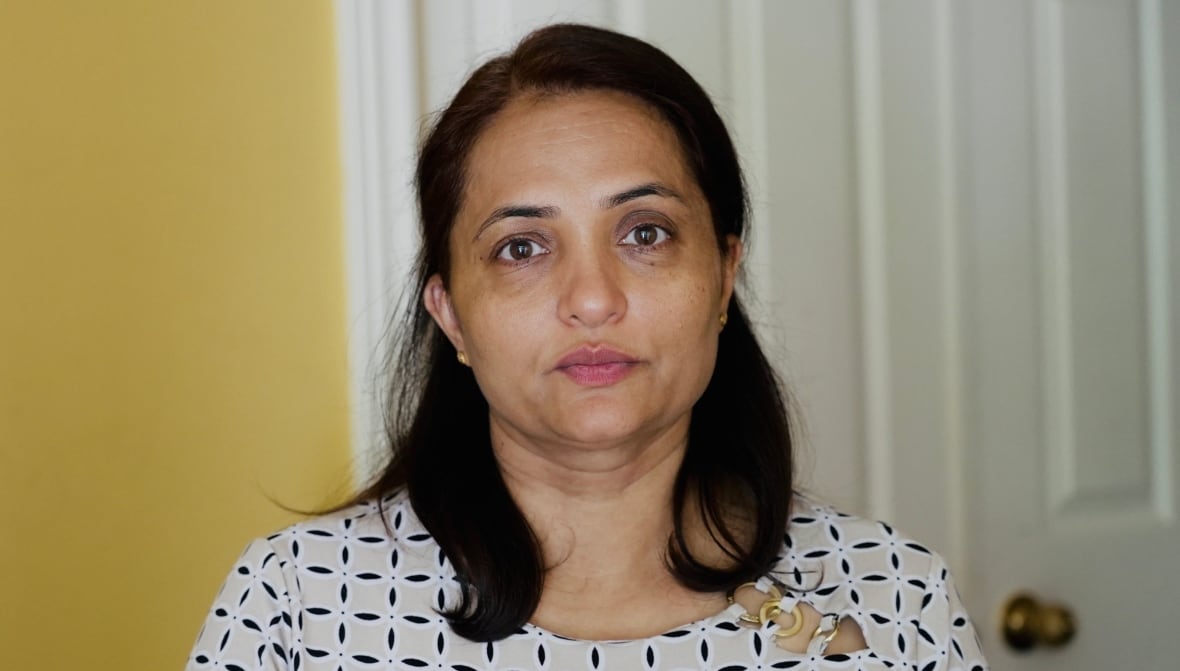When Ravinder Kaur Sidhu welcomed her third child into the world in June, it was a moment of excitement.
The 40-year-old mother from Brampton, Ont., gave birth at Credit Valley Hospital in Mississauga.
Her healthy baby boy went home, but she never did.
She died days later at Toronto’s Sunnybrook Hospital, after her body went into septic shock from a Group A Streptococcus infection.
Her family believes medical staff at Credit Valley Hospital didn’t act quickly enough when Sidhu first presented signs of sepsis — even ignoring pleas from the family — and that her death may have been preventable if life-saving efforts were made sooner.
Sepsis is the immune system’s extreme response to an infection, which in turn damages the body’s own tissue and organs. It is a leading cause of death worldwide, according to the World Health Organization.
Sidhu’s family is calling for improved sepsis protocols at hospitals throughout Ontario, focused on recognizing symptoms and enhancing response times.
“She went to the hospital to get a baby and never came out of it. I really hope that no other family has to go through that kind of experience,” said her husband, Gurinder Sidhu.
Trillium Health Partners, the hospital system of which Credit Valley is a part, told CBC News it could not comment on individual medical details, but in a statement said that it takes “concerns raised by our patients and families very seriously” and has a “thorough review process.”
From routine delivery to rapid deterioration
Ravinder’s childbirth experience the morning of June 19 was routine. She required stitches due to a vaginal tear, and then was taken to a recovery room.
Within hours, however, she experienced shakes and heavy bleeding, an elevated heart rate and an elevated white blood cell count. That afternoon, she also spiked a fever of 39.2 C, according to her medical records.
Those symptoms can be indicative of sepsis.
Dr. John Marshall, a retired surgeon and intensive care specialist at Toronto’s St. Michael’s Hospital and a leading expert and researcher on sepsis, says the condition can be very difficult to spot, as symptoms vary, can overlap with other conditions and may be subtle. He did not comment specifically on Ravinder’s case and has not reviewed her medical records.
“But classically, the symptoms are going to be fever and elevated heart rate, elevated breathing rate, perhaps some … confusion or at the very least inability to focus and to concentrate,” Marshall said.
He said in cases where sepsis is suspected, the “first and foremost priority” is to diagnose and treat the underlying infection. Marshall said antibiotics could be administered before the specific infection is confirmed, since time is of the essence. But even with treatment, sepsis can often be fatal.
In 2021, the Surviving Sepsis Campaign, an international initiative aimed at reducing sepsis mortality, published guidelines recommending various steps, including obtaining blood cultures and administering broad spectrum antibiotics within an hour of the initial recognition of sepsis.
In Ravinder Kaur Sidhu’s case, hours went by after those first symptoms without diagnostic tests or antibiotics.
“I was just waiting for her to get better, but things were not progressing well,” said Gurinder Sidhu. “The reply I always got was, ‘These symptoms are normal.’ But now I’ve learned that nothing was normal about those symptoms.”
Ravinder’s medical records show that overnight on June 20, she complained of extreme pain and couldn’t move her legs. Gurinder said it was “traumatic” to see his wife in so much pain. The next morning, her blood pressure plummeted.
That morning, Gurinder spoke with Ravinder’s sister, Kiranjit Kaur, who is an ICU nurse in Buffalo, N.Y., and who saw her sister’s vitals over a video call.
“I literally screamed like, ‘Gurinder, she’s in shock!'” Kaur said. “He’s like, ‘What do you mean?’ I’m like, ‘She’s in septic shock. Where’s the nurses? Where’s a rapid response? When did this happen?'”

The family says nursing staff dismissed their concerns, even after Kaur drove to Mississauga to advocate for her sister.
Medical records show Ravinder was seen by a doctor around 10 a.m. that morning, and that she was given IV fluids. It wasn’t until that afternoon that blood and urine cultures were taken to test for infections. She was assessed by an infectious disease specialist at 4 p.m., who prescribed antibiotics.
This was nearly 29 hours after Ravinder’s initial symptoms.
Trillium Health Partners didn’t comment specifically on Ravinder’s case, but in its written statement, it told CBC that “once sepsis has been recognized, the goal is to start treatment — within the first hour — while applying sound medical judgement to each case.”
Uterus and ovaries necrotized
By the afternoon of June 20, signs of infection had become visible on Ravinder’s leg. Gurinder says despite Ravinder complaining of severe abdominal pain and expressing concern about her uterus, the medical team focused on the leg as the infection source.
Marshall says finding and controlling the infection source is key, but can be very challenging. However, if a patient has recently had an operation, that’s typically a good place to start looking.
“It does seem to me that in somebody who’s just given birth, that it’s probably something related to the birth process that is responsible for this, rather than say, you know, a completely separate infection,” Marshall said.
By the time a hysterectomy was performed on June 21, Ravinder’s uterus and ovaries were necrotic, meaning the tissue was dead.
She was transferred to Sunnybrook Hospital the next day, and died on June 23.
Gurinder has submitted complaints to the College of Physicians and Surgeons of Ontario as well as the College of Nurses of Ontario, asking them to investigate the care provided by various medical staff. Both regulatory bodies told CBC News they can’t confirm whether investigations are underway, due to confidentiality requirements.
Gurinder has also submitted a complaint to Trillium Health Partners. The hospital told CBC it has a “thorough” review process and that “questions about symptom recognition, signs of illness, treatment timelines, and transfer decisions” are “at the heart” of that process.
Calling for policy changes
Gurinder Sidhu not only wants a review of his wife’s case, he also wants to see changes at the provincial level, including the institution of a one-hour sepsis protocol in every birthing unit in the province.
“When you have textbook symptoms, we should have protocols to handle it,” he said.
In an email to CBC News, a spokesperson for Ontario’s Ministry of Health called the case “tragic and troubling” and said the ministry “expects every hospital to uphold the highest standard of patient care.”
The ministry didn’t answer CBC’s question about whether it’s considering creating a province-wide sepsis protocol.
Speaking to reporters on Wednesday, Health Minister Sylvia Jones said she doesn’t want to “presuppose outcomes” of any internal investigations.
“But I will say that when and if we find that there are improvements that can happen, I have full confidence that that will happen in our systems,” Jones said.
The Society of Obstetricians and Gynaecologists of Canada (SOGC) has advocated for the implementation of a Modified Early Obstetrics Warning System (MEOWS), a clinical tool used to monitor patients and identify those at risk.
Dr. Sebastian Hobson, chair of the SOGC’s clinical obstetrics committee, says systems like MEOWS can help “pick up on things that can be subtly missed or overlooked.”
“We’re not all practising [medicine] in exactly the same way,” Hobson said. “We can hope that every health-care service is operating at its peak efficiency or optimally all the time. But the reality is that we’re all humans.”

He said some hospitals are adopting MEOWS, including Toronto’s Mount Sinai Hospital, where he works.
While Trillium Health Partners hasn’t formally adopted MEOWS, hospital spokesperson Priyanka Nasta said in a statement that the “core practices” found in MEOWS are “incorporated into the hospital’s approach.”
Now a single parent to three young children, Gurinder Sidhu says he is motivated by his wife’s legacy to continue his advocacy. He says his wife was beloved in her community, including by patients at the three physiotherapy clinics she owned in the Greater Toronto Area.
“My wife was a fighter, and just by living with her, I know what she would have done if something would have happened to me,” he said.






